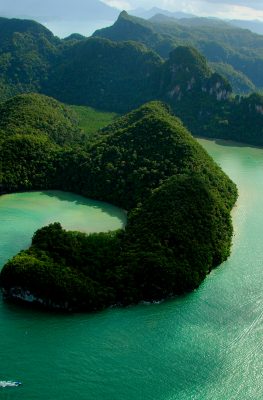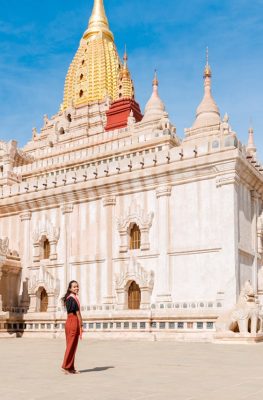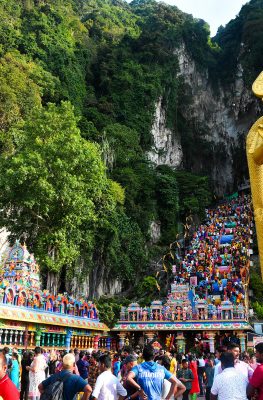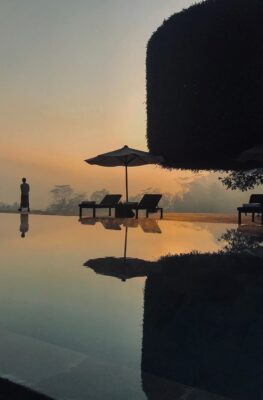Published on July 7, 2017
The massive island of Borneo includes territory from three different countries, splitting the territory’s natural wonders between Indonesia, Malaysia and Brunei. Located far from the first two’s capital cities, Borneo feels majorly off the beaten path – which isn’t a bad thing, considering the adventures you can carve out of a few weeks’ stay here.
For alternative itineraries that cover part of the destinations we list here, check out Wandering through Wild Borneo, Borneo from Village to City, and Hit the Trails of Sarawak and Sabah.
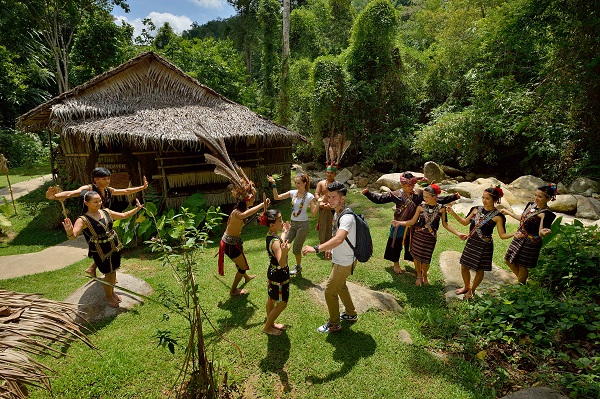
Kota Kinabalu, Malaysia: Beaches and Cultural Villages
Begin your trip at Kota Kinabalu, capital of the Malaysian state of Sabah northwest of Brunei. As Borneo’s major air hub, Kota Kinabalu Airport welcomes direct flights from Kuala Lumpur, Hong Kong, Seoul, Shanghai and Manila – making this city a natural choice as the itinerary’s starting point.
Within city limits, Kota Kinabalu offers a laid-back urban alternative to the hurly-burly of Southeast Asia’s capitals: watch a sunset at Tanjung Aru Beach, or visit one of the city’s markets to people-watch and get your hands on some local arts and crafts.
The fun really begins when you drive away from the city – a 25-minute drive takes you to Mari Mari Cultural Village, where you’ll meet representatives of five different ethnic tribes – the Bajau, Lundayeh, Murut, Rungus and Dusun – and experience hands-on demonstrations of their cultural arts from tattoo-making to blowpipe-making.
A ferry ride away, you’ll visit Tunku Abdul Rahman Park in Sabah, a marine reserve set amidst gorgeous islands. The dazzling white-sand beaches offer a great backdrop for snorkeling and lazy picnics.
From the city, ride two hours by bus to one of Southeast Asia’s highest peaks, Mount Kinabalu, and take on its formidable 4,000-masl height, rare flora and fauna (the Rafflesia flower can be found growing on its slopes), and challenging via ferrata trails.
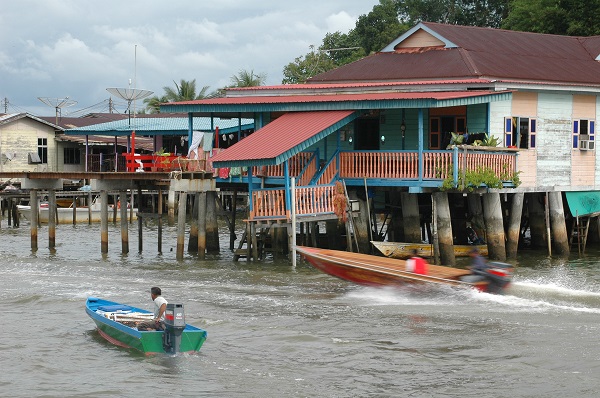
Bandar Seri Begawan, Brunei: Royal Grandeur
The tiny nation-state of Brunei draws its wealth from its rich oil reserves, and its beauty from the rugged natural landscape and the charming Islamic culture it practices.
Start your visit with a night tour of Bandar Seri Begawan, the capital – you’ll witness the lights illuminating the Sultan Omar Ali Saifuddin Mosque, the glittering presence of the Jame’ Asr Hassanil Bolkiah Mosque, and the hubbub of the Gadong Night Market. (Read more: Bandar Seri Begawan’s Culture & Heritage)
The day allows you time to see museums like the Brunei Museum and the Royal Regalia Centre; and take a “water taxi” ride down Brunei River to see Kampong Ayer, a historic water village at the heart of the city.
Further afield, you can visit the Seria Oilfield Operation Centre to glimpse the source of Brunei’s prosperity. Nearby attractions include the Forestry Museum at Sungai Liang Forestry Centre; the Billionth Barrel Monument at Seria Oilfield; and Jerudong Park Playground, Borneo’s biggest theme park.
Save the best of Brunei for last: visit the Ulu Temburong National Park, accessible only by long boat and most notable for its canopy walkway suspended 50 metres from the forest floor. Amidst the treetops, you’ll see the wildlife making a living amidst the branches, including rare monkeys and birds.
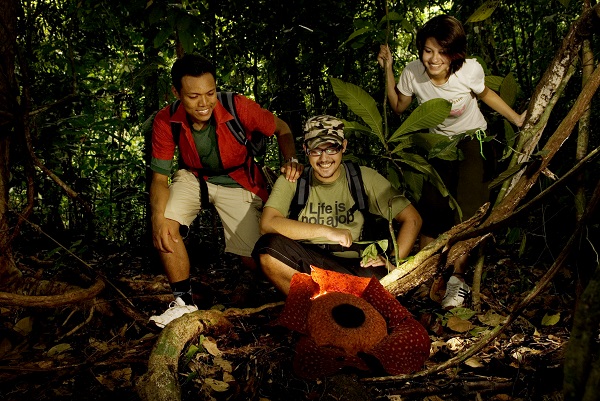
Kuching, Malaysia: Encroaching Jungle
The capital of the Malaysian state of Sarawak feels like a new city carved out of the jungle – indeed, you’ll see the often rainforest peeking out just beyond the buildings.
The Kuching Civic Centre kicks off your visit with a 360-degree view of the city from its umbrella-roofed viewing tower. Visit the Main Bazaar‘s shophouses for some local souvenirs; see the Tua Pek Kong Temple‘s daily ceremonies; and end your day watching a sunset at the Kuching Waterfront, adjacent to landmarks like Fort Margherita and the Astana.
Kuching’s museums are a treat to behold: the Sarawak State Museum’s historical displays; the Islamic Museum’s religious artifacts; the Cat Museum’s look at the city’s namesake; and the Timber Museum’s exhibits on the local logging industry.
About two hours by bus from the city center, you’ll come across Gunung Gading National Park, where Rafflesia and other rare plants can be found in the wild.
Special Package for the ASEAN 50 Golden Celebration: Limetree Hotel, Kuching
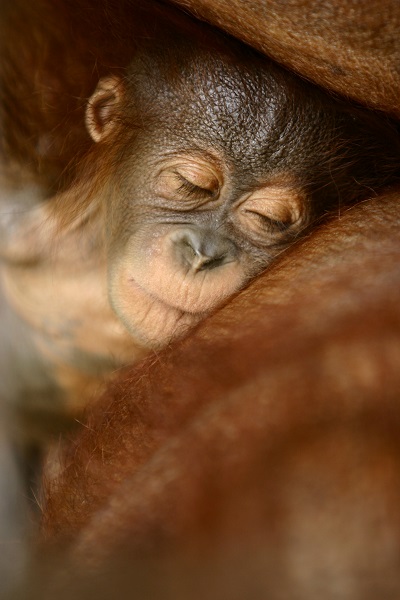
Tanjung Puting, Indonesia: Orangutan Haven
The best-loved attraction on the Indonesian side of Borneo can be found to its far south: Tanjung Puting is a wildlife preserve populated by a protected community of orangutan, the only indigenous apes of Southeast Asia. You’ll see them roaming in the wild as you float up the river in a klotok, or an indigenous live-aboard boat.
The klotok commutes from Kumai up Sekonyer River, allowing close communion with animals like proboscis monkeys and false gharials. Eventually you’ll disembark at Camp Leakey, a research station established in the Bornean jungle to protect the endangered orangutan of Kalimantan.
During feeding times, you’ll finally see orangutan up close – along with some of the unique species native to Borneo, among them clouded leopards, banteng cattle, and over 230 species of birds. The latter roost at Tanjung Puting’s “bird lakes”, a haven for Borneo’s endangered waterfowl.



